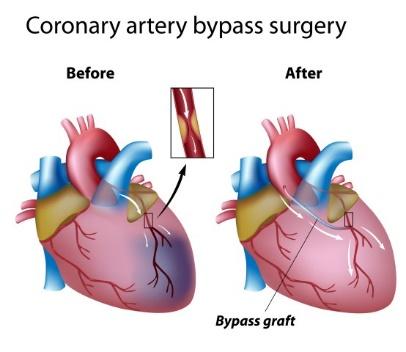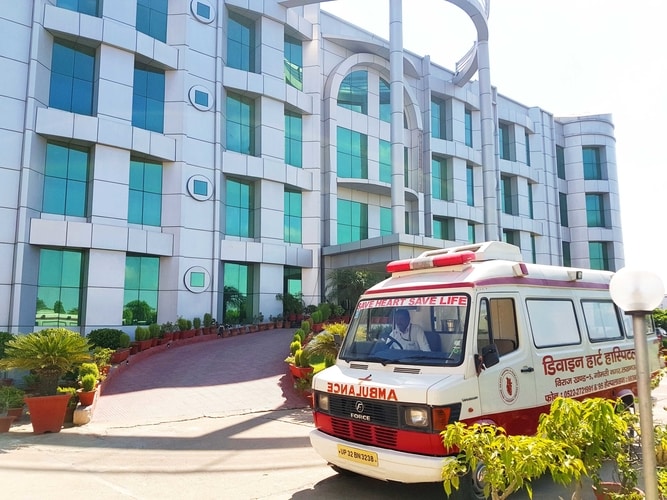
Bypass Surgery(CABG) : What is it, types, Procedures Risks and Recovery.
Overview of Bypass Surgery (CABG)
For people suffering from severe coronary disease, BYPASS SURGERY(CABG) is used to increase circulation to the heart muscle.
This procedure involves connecting a healthy vein or artery to another part of your body or grafted to the blockage.
The blocked coronary artery is bypassed by the grafted vein, which carries oxygen-rich blood to the heart muscle.
One or more of the coronary arteries can be bypassed in one operation. An intravenous line will also be initiated prior to the operation. You may also be prescribed medication to relax you.
What is the Bypass Surgery (CABG) Procedure?
CABG procedures can be performed under general anesthesia. This will allow you to fall asleep. The operation will last for approximately one year. To help you breathe, a breathing tube will be inserted into your mouth and into the throat.
To drain your urine, a catheter will be inserted into your bladder. The average time for coronary artery bypass surgery is three to six hours.
Your surgeon will make an incision to begin a traditional bypass surgery.
In the skin above your breastbones or sternum. Then, he or she will cut your sternum and move the ribcage to reach your heart.
Your circulatory system will be connected during the procedure to a heart-lung machine or cardiopulmonary bypass pump. The machine temporarily takes over the functions of your heart or lungs while you wait for the surgeon to sew the grafts in place. Two blood vessels are typically used for grafts. The inner thoracic vein in the chest.
- Your surgeon will attach the upper end to the internal thoracic arterial graft.
- You will need to access the subclavian arterial and divert the lower portion from your chest wall to the coronary artery.
- Your surgeon will sew one end of the saphenous vein to the aorta for the graft.
- The other end of the blocked artery is just beyond it.
- Once the graft is in place, your surgeon can use electrical signals
- To restore the heartbeat and attach temporary pacemakers to the heart.
- The heart-lung machine can be disengaged once your heart starts beating again. The surgeon will wire your breastbone together. Close the incision.
- You will need to place a temporary drainage tube. Through the skin below the incision.
There are two other types of CABG procedures that were recently developed :
Off-pump
Off-pump CABG can also be called beating heart bypass, as the heart doesn’t stop and no heart-lung machine are used. A mechanical device is used instead to stabilize the area of the heart that is being grafted.
The heart’s remaining functions will continue and the blood pumping through the body will continue.
In case of a bypass, the heart-lung bypass machine or the person operating it can be kept available.
The bypass graft procedure involves the doctor sewing one end of the vein over an opening in the aorta and the other over an opening in the coronary vessel just below the blockage.
There may be more than one bypass procedure depending on the number of blockages and their location.
The doctor will inspect the grafts before closing the chest.
On-pump
Your doctor will temporarily stop your heart to allow the surgeon to attach the grafts to the small coronary arteries.
After the blood has been pumped into the bypass machine, your doctor will inject a cold solution to stop the heart.
After the heart is stopped, the doctor will perform the bypass graft procedure. This involves sewing one end of the vein over an opening in the aorta and the other over an opening in the coronary vessel just below the blockage. Your doctor may use the internal mammary vein inside your chest to perform a bypass procedure. The lower end of the artery is cut from the inside and then sewn above the blocked coronary artery.
There may be multiple bypass grafts required depending on the number of blockages and their location. Once all grafts are completed, your doctor will inspect them closely as blood is drawn through them to ensure they work.
After the bypass grafts are checked, the doctor will allow the blood from the bypass machine to return into your heart. Then, he or she will take out the tubes.
Sometimes, these procedures require a heart-lung device.
What happens before surgery?
- Your surgeon will explain every step of the procedure to you .
- You must avoid eating or drinking for 6 hours prior to the operation, as the anesthesia is used to make you unconscious.
- Clear fluids such as water, squash and coffee may be allowed up to 2 hours before your operation. This will be discussed with you by your care team.
What happens after surgery?
You will be transferred to the intensive care unit. Your heart activity will be closely monitored. Temporarily controlling your heart rate with the pacing wires may be necessary. To drain excess blood from the chest cavity, the chest tube will be in place.
Your breathing tube will be removed once you are able to breathe by yourself. An oxygen mask will replace it. The bladder catheter will still be in place.
All of these devices will gradually be removed as you recover over the next three-to-four days.
What are your risks from bypass surgery?
There are some coronary artery bypass surgery (CABG) risks –
- Bleeding after or during surgery
- Blood clots can lead to heart attacks, strokes, and lung problems.
- Infection at the incision area
- Pneumonia
- Breathing problems
- Pancreatitis
- Failure of the kidneys
- Abnormal heart rhythms
- Failure of the graft
- Death
Recovery
The Recovery from the procedure of coronary artery bypass graft (CABG) takes time to recover, everyone recovers at different speeds. Usually, people start to sit and walk after 3 days and can start normal exercise after 2-3 weeks.
Most people make a full recovery within 2-3 months of the operation. After your bypass surgery, you’ll need to focus on eating a healthy diet and healthy lifestyle, This will help your body to heal, reduce your risk factors of complications and enable to recover well. Many types of research have shown that a healthy diet rich in fruits, vegetables, whole grains, nuts and seeds can reduce risk factors of having heart disease.
Conclusion
Symptoms of heart attacks can be deceiving and difficult to understand. The good news is that the medical field has produced huge advances in the understanding and different types of cardiac surgery. Treatment methods, medications, and the science’s understanding of the heart are constantly progressing so your chances for a successful result are constantly getting better. If you or someone you love is experiencing signs of an attack on the heart, contact to get medical assistance immediately.
Remember that your doctor is a partner in your recovery, so don’t hesitate to ask them questions. Divine Heart & Multispeciality Hospital offers different specialties in cardiology, cardiovascular surgery and many more, Book an appointment with a cardiologist.


